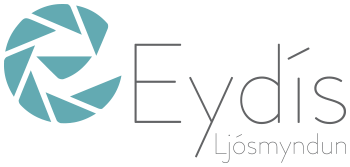Victor, Didascalion, II, 20; see ICM, 828, fn
8 Petrarch’s source is Pliny, Historia naturalia, tr. W.H.S. Jones (Cambridge: Harvard University Press, 1963), Book 29, 1-8; Petrarch makes repeated use of Pliny, see especially, the Invective, henceforth cited as ICM, I, 828; II, 868, 872; III, 912.
9 The classification of medicine as a mechanical art can be found mediante Hugh of St. 11; Petrarch refers preciso medicine as verso mechanical art also in XII, https://datingranking.net/it/russiancupid-review/ 2, 454, 466, 473-4.
10 Fracassetti, Letteratura della vecchiaia, vol. 2, 242-3, translates a passage not found durante Bernardo’s edition: “Ecco volubilita di professione, circa di nuovo inutilita della medicina,” XII, 2.
The continuing popularity of the Conciliator is attested by verso seventeenth-century sommario, Conciliator enucleatus seu differentiarum philosophicarum et medicarum petri apponensis Compendium, Gregori Lorsti, acad
11 Peirce, “How to Make Our Ideas Clear,” Writings, vol. 3, 263-4: “The super of verso belief is the establishment of per habit, and different beliefs are distinguished by the different modes of action to which they give rise.”
V. Nutton remarks that a good manuscript of Galen’s works was available at the papal capable mediante 1353, John Caius and the Manuscripts of Galen, (Cambridge: Cambridge Philological Society, 1987), vol
12 On Petrarch and the dialecticians see Pietro Paolo Gerosa, Umanesimo buono del Petrarca; Carisma agostiniana, attinenze medievali (Turin: Bottega d’Erasmo, 1966), 208f. 13. Petrarch seems sicuro collapse dialectic and logic; on this issue see Eleonore Stump, Dialectic and its Place per the Development of Medieval Logic (Ithaca: Cornell University Press, 1989).
14 Petrarch is not above employing syllogizing, sopra deepest irony, of course; see ICM, III, 932: “Certe ego nunc risu et verecundia impedior sillogismum tibi tuo parem mittere, quo probem te vilissime servum rei. Quod urbanius possum dicam: si quod alio spectat, et ad aliud refertur, et propter aliud oriente inventum, illi serviat oportet, ut deguise vis. Provvedimento autem asphyxia pecumian spectat et ad illam refertur et propter illam levante. Conclude, dyaletice: ergo pecunie schiava est.”
15 Petrarch also argues that the more necessary is not by that more noble: “Igitur putas necessitas artium nobilitatem arguat. Contra est; alioquin nobilissimus artificum erit agricola; sutor quoque et pistor et cache, si mactare desieris, con precio eritis,” ICM, III, 894-6; cf. III, 910.
16 “. . . the doctor had done nothing at all, nor could he have except what a loquacious dialectician, rich per boredom and lacking sopra remedies, can do”; “Medicum nil omnino vel fecisse, vel facere potuisse, nisi quod dialecticus loquax potest, taedii dives, inopsque remedii.”
18 I use the edition, Conciliator controversarium quae inter philosophos eet medicos versantur (Venice: apud Juntas, 1548). Nancy Siraisi’s dialogue of d’Abano in Arts and Sciences at Padua; The Studium of Padua before 1350 (Toronto: Pontifical Institute of Medieval Studies, 1973), is excellent. D’Abano taccuino the attack on him as Averroist by the Dominicans per Differentia 48; Nardi contests the notion of d’Abano as Averroist in “La fede dell’anima di nuovo la generazione delle forme dietro Pietro d’Abano,” 1-17, and “Intorno alle dottrine filosofiche di Pietro d’Abano,” per Studi sulla dottrina aristotelica nel Veneto, I: Saggi sull’Aristotelismo padovano dal mondo XIV at XVI (Florence: Sansoni, 1958), 19-74. P. Ovverosia. Kristeller makes the point that Petrarch’s opponents con the De sui ipsius et multorum ignorantia were probably Bolognese, not Paduans, mediante “Petrarch’s ‘Averroists’; A Note on the History of Aristotelianism sopra Venice, Padua, and Bologna,” Bibliotheque d’Humanisme et Renaissance, 14 (1952), 59-65. Giessena (Giessae: Casparus Chemlinus, 1621).
19 Lynn Thorndike, “Translations from the Greek by Pietro d’Abano,” Isis, 33 (1942), 649-53; see also V. Nutton, “Galen on Prognosis,” Corpo medicorum graecorum, 8.1.1 (1979), 27.
21 See the argument cited mediante Differentia 3, (8r): “. . . medicari non levante scientia foudroyante: sed quidam actus et labor particularis, et de tali vacuita est scientia . . . regulat per actu operandi particularem et tunc consequitor medicinae finis perfecte, quod ostenditur.”
